#osum..
Explore tagged Tumblr posts
Text

i'm getting good at doodling i think :) i used to be pretty repressed artistically despite having been artistic before. i just feel into a self deprecating cycle of feeling behind but im doing more and i just feel better
9 notes
·
View notes
Text
idk who else is into keyboards but im debating on the osume prebuilt lolol

i kinda wish they had green but starlit white is cute too
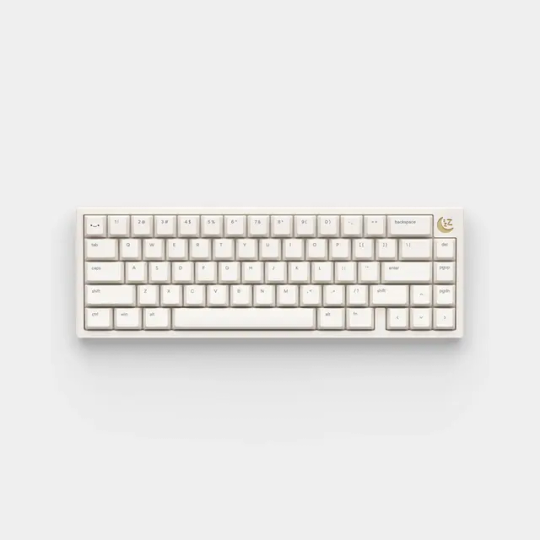


#₊˚ ᗢ rurumi rambles#ive always been a big fan of osume products#i own their mochi hangul set with melon accents and combined with my bsun roselles has a super poppy but deep sound#the prebuilt is super cute with the moon but i honestly have no idea if i wanna get a new board#maybe its just me wanting to spend money...
16 notes
·
View notes
Text


keyboard: helheim design baldr65 keycaps: osume lilac dreams (marshmallow) switches: bsun snow diane artisan: anykey lilac dori cable: osume lilac dreams deskmat: osume lilac dreams
i wasnt sure how this set would look on the baldr65 (its a completely glass case btw) but i really love how well it works with it. its very calming, & "fragile" comes to mind lol
8 notes
·
View notes
Text
SUPER/HÉROE
Leyendo Future Quest (2016-2017) y Green Lantern/Green Arrow (1970-1972) y viendo Infini-T Force (2017) me di cuenta de algo, y es que me resultaba tremendamente refrescante leer relatos de corte clásico sobre el heroísmo.
Algo que uno imaginaría sería la norma ya no lo es, debido a que llevamos varias décadas bajo la influencia de obras muy populares que subvierten y critican los fundamentos del género. En la era en que vivimos las historias clásicas parecen a los ojos de muchos desconectadas con la realidad.
Para examinar esa idea, intentaré explicar lo mejor que pueda los dos fundamentos que yo creo una historia de superhéroes debe entender.
Las tres historias mencionadas al inicio son del tipo crossover. Future Quest e Infini-T Force reúnen las series de aventuras no interconectadas de Hanna-Barbera y Tatsunoko, respectivamente, mientras que Green Lantern/Green Arrow es un crossover dentro de un mismo universo ficticio donde ambos héroes ocupan rincones muy diferentes, el espacio exterior y las calles.
SUPER
Debería ser evidente que la historia superheroica es necesariamente metafórica. Puede ser una metáfora de muchas cosas, pero desde el comienzo (por ejemplo, Superman o Spider-Man) ha sido sobre alguien con habilidades extraordinarias que se enfrenta a amenazas extraordinarias, pero también a problemas cotidianos.
Future Quest cuenta con extraterrestres, seres interdimensionales, poderes basados en culturas antiguas y también robots gigantes. Los amenazas también son de ese estilo, pero la historia termina hablando de ideas que sí se conectan con nosotros, como la colaboración más allá de las diferencias (Y entra también en el goce de los poderes, algo casi pueril que siento que también se ha perdido). En Infini-T Force los héroes que se transforman vienen de diferentes dimensiones y tienen poderes fantásticos, pero lo crucial es que ayuden a la joven protagonista a ver que vale la pena vivir.

Y bueno, entonces, ¿qué onda con Green Lantern/Green Arrow, que es histórica por abordar de forma directa problemáticas sociales? Si bien Green Lantern y Green Arrow pueden resolver un caso, la naturaleza humana no cambia, y su lucha eterna sigue, por lo mismo. Y bueno, si el superhéroe arregla los problemas sociales… ¿no privará eso a cada uno de sus libertades individuales?

Entonces cuando un autor empieza a hacer preguntas como “¿por qué el héroe no arregla definitivamente este problema social o de desastres naturales?” entramos en problemas, porque, al igual que con cualquier otro género, hay ciertas preguntas que no deben hacerse o se rompe la estructura. En particular esto me parece relevante porque pierde el punto central, que no tiene que ver con la fantasía sino con la realidad: en la realidad no habrá un extraterrestre que detenga los tsunamis cuando ocurran, entonces una historia donde arregle todos los problemas no nos sirve de mucho.
Los poderes son parte de la metáfora, los conflictos también lo son. No se puede equiparar el mundo de una obra superheroica con el mundo real en una relación 1:1. Mientras las metáforas hablen del mundo real, no es necesario que los elementos de la historia sean equivalentes absolutos de los nuestros.
HÉROE
Esta idea se diluye cada vez más entre los protagonistas sarcásticos y desafectados (y a veces, psicópatas) que pueblan el cine y la televisión del género, pero creo que la nobleza del superhéroe debiera seguir siendo la norma. No significa rehuir de complejidad moral, pero como estas historias son metafóricas, el carácter del héroe debería seguir siendo algo a lo que aspirar. Efectivamente Superman actúa en una escala diferente a Spider-Man, y Peter Parker es más falible que Kal-El/Clark Kent, pero mientras ambos apunten hacia la misma dirección, nosotros también podemos hacerlo.
Ya es cliché la lección que de Stan Lee (y después del tío Ben) de que un gran poder debe conllevar una gran responsabilidad. La otra parte que no se declara, pero se ilustra, es la aceptación de la pérdida, a la larga el sacrificio. En Infini-T Force los villanos son aquellos que no pueden aceptar la pérdida y aferrándose a lo que ya se fue cometen actos atroces. Los héroes pasan por el mismo proceso pero eligen dejar ir y avanzar.
Future Quest tiene un acercamiento similar, donde los variopintos héroes tienen una decencia y caballerosidad (incluidas las mujeres) que les permite unir sus esfuerzos. Green Lantern/Green Arrow es un poco diferente debido a que comienza en un enfrentamiento ideológico entre Hal y Ollie, pero la clave es que al expresar sus puntos de vista opuestos, hay una dialéctica y logran una síntesis productiva, no declaran una guerra civil entre los héroes. La razón por la que agrupo estos dos títulos en este párrafo es porque en ambos hay héroes con y sin poderes fantásticos, pero eso no impide que la historia funcione, porque lo que en verdad importa en una historia de superhéroes, es esa parte de al final.

______
No quiero ser pedante, nunca me propuse tener estándares respecto a las historias de superhéroes, pero supongo que después de leer y ver tantas, se va perfilando una preferencia y hasta creencia. Sobre todo de nobleza, que creo que debe ser preservada. Porque al final estas historias son para que podamos aguantar y avanzar nosotros.
#osum#mucho texto#muchotexto#green lantern green arrow#future quest#infini-t force#superheroes#comics#tatsunoko#hanna-barbera
3 notes
·
View notes
Text
ep 1061 aka IFRIT JAMBE EPISODE !!!!!!!!!!!!!!!!
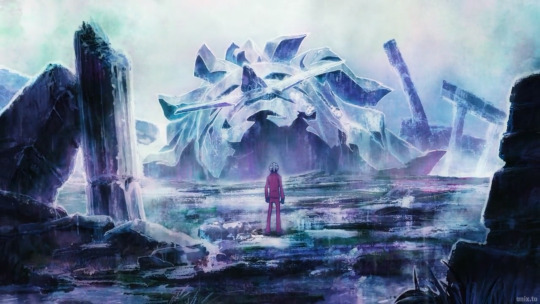

idont think these are canon to the manga but theY FUCKING REDREW HIS HELMET ON HOIM ASKJDB KJVCNLKNVKJLSN UUEUGHGH!!!

are they trying to make me cry . fuck


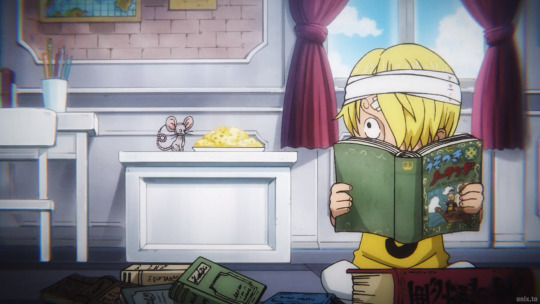
HE SAVED THE RAT....AND THEY EXPLICITLY POINTED OUT HIS SOFT SPOT FOR RATS...HELP
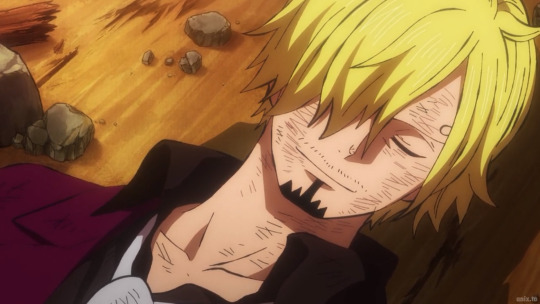
STUPID FUCKING PERVERT CHARACTER WHY ARE YOU LIKABLE AND WELL WRITTEN
#misqnon's one piece liveblog#[crying cat screaming x 1000]#wano spoilers#also the reveal he wasnt the one who hit osume...IDK HOW IF EEL ABT IT. IDK IF IM HAPPY OR DISAPPOINTEF#BUT THIS EP WAS RLLY GOOD.
6 notes
·
View notes
Text

all set for Valentine's Day ❣️
#check out how amazing awesome marvelous beautiful stunning sensational my keyboard is now!!!#mechanical keyboard#epomaker th80#keebs#osume#<- if you like keyboards say hi we can follow each other on insta and tag each other in giveaways lol
14 notes
·
View notes
Text

Board: KBD75 v3.1, tape modded Switches: Gateron Milky Yellows, lubed Keycaps: Osume Keys Dusk
my Ziyang-core keyboard hehehe 🌙
21 notes
·
View notes
Text

New week//new keycap configuration
3 notes
·
View notes
Text
The AUDACITY of Osume sending me an email about their "holiday sale" on keycaps and the listing all the prices with zero discounts and expecting me to be dumb.
Like it's FINE if you can't do a holiday sale bc you're a small company and can't afford it. But don't send me an email LYING.
13 notes
·
View notes
Text










Been waiting for these beauties for ages
So excited
5 notes
·
View notes
Text






Osum-Schlucht - Albanien - September 2023
0 notes
Text
tyvole, dohadovat se s teplym členem espédé potom, co jsem zjistila, že ta úžasná charita madam roulyngový je celá o snaze zrušit veškerý dětský domovy s tim, že je ale tahle dobrá duše zároveň proti potratům a adopcim cizinci, teplouši a bůchvíkym a že jí k týhle geniální myšlence přivedla fotka z českýho dětskýho domova z roku dva osum... no žůžo den.
15 notes
·
View notes
Text

View of the Osum River Valley, from Berat,Albania.
Taken from hte newerr bridge in the town centre on Thursday morning.
18 notes
·
View notes
Text

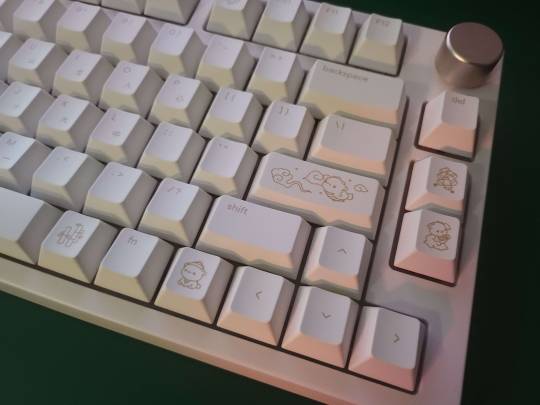
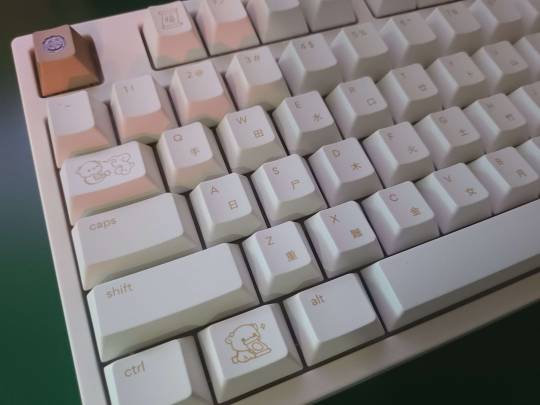
osume yotd cangjie set + tsukimi metal artisan on my th80 pro
3 notes
·
View notes
Text




Did covers for the three absolutely wack and inventive collaborative comics the students of my Storytelling course did last semester.
5 notes
·
View notes
Text
Dev Pile 2025-22 — Sharkuterie
Rapid prototyping is the practice of taking a game idea and then, within a fixed timeframe, doing what you can to create a workable version of that game. It’s game jam stuff. Except we call it ‘rapid prototyping’ in the academic space because game jams sound far too fun.
Rapid prototyping is a practice I love doing and I recommend you do it because it lets you mess around with pens and paper. You get to break from rules about how things are or aren’t meant to be used: you aren’t supposed to draw on game components. You aren’t supposed to rip up things and make them into new things. The prototype I expect to make with this game, in this post, is going to be playable in a deck of cards that I’m going to draw all over with a pair of permanent markers, you know?
However. I guess we’ll do it as a content warning.
Content Warning: This is going to discuss and show the work of generative media tools, specifically Microsoft Copilot. I am not paying for Copilot; it is being paid for by my work. I am using it as a tool and trying to give an honest assessment of what it does and as a designer, the things that it can do. This should not be considered as a recommendation for these tools. I want to talk to you about the things they do not do well, and the things you can use them for.
Also, I’m writing all of this. I’m writing about the experience of using Copilot, not using Copilot to write about it. After all, surely Copilot would never say anything nepotistically self-praising since it is after all such a good program that does not do anything you will complain about later.
What Did I Do With Copilot?
The idea was that if Copilot (and other tools of its type) present themselves as everythingamajigs. They can do everything in every part of a process. I booted it up, and told it that I wanted to make a card game. I had an idea; I wanted a game about mermaids making charcuterie boards, with the threat of a shark taking food. I called it sharkuterie, and I told Copilot I wanted it to help me make it. It offered to present sample rules, and I said sure.
It then proceeded to give me completely dogshit rules that needed around 100 cards to be interesting, multiple types of tokens and counters, and a board. Simply put, it sucked.
I told it those rules were bad and instead I suggested a game about a set of 9 small decks, and each stack had a shark in them. You had to be careful about how far you could go in any stack without getting a shark to bother you. This is from my game design Camp Osum. I actually really liked this idea in hindsight, with the idea that once a shark has left a stack, you want to plunder that stack, which means players wind up with valuable boards… that are then in danger now they have to work on other stacks.
Gunna use that idea somewhere else.
Anyway, I didn’t like this idea for this set collector. I didn’t really get a good feel for it, but also, this wound up consuming a lot of card space, and meant for a 50ish card deck, in 9 stacks, with a shark in each, that’s 41 cards and each stack would be pretty small. That kind of sucks, I don’t like that. Plus, there’s nothing spatial in it. If there’s a grid of cards, and the stacks are slowly shrinking, it should mean something, like are you hiding behind these stacks as they wear down or something?
I told Copilot to ditch that idea, and instead I wanted a simpler version of a more blackjack style, flip-from-the-top game. I told it the mechanics I wanted, I realised that this meant I could put in an ‘attracts the shark’ stat, and then all I needed was a way to make the cards you collect meaningfully different, and for them to represent charcuterie. I asked Copilot to list to me what goes into a Charcuterie, and it suggested a list, then asked me if I wanted it to produce some thematically appropriate card examples.
And… I told it okay.
It produced then a list of perfectly reasonable but not great card names, with things like ‘kelp cheese,’ or ‘jellyfish wine,’ and then offered to use its image generator to make some proxy cards. Which, again, testing the device, I said okay.
I’m not hosting the image here because it sucked and it sucked so bad that I didn’t bother to save it. It wasn’t an image of a proxy card; it was angled, it showed a bunch of cards, partially, and unclearly, with no meaningful text on them. It was not producing what it described, it was producing, well, the slop picture for a news story about those things.
Then I asked Copilot to compile a summary of this I could share with my students, and I put that in a document for them.
The Actual Game Though
Anyway, this meant that I had a ‘game’ I made, and spent the next day just making the card images and finding stock art to make a version of the game that looked like non-ass.
This is an example of what I think of as a ‘deck’ game. It’s 52 cards, held in a single box. No tokens, no counters. You remove exactly one card, you shuffle the deck, and then the game starts.
1 Shark Card
51 Ingredient Cards. Each card has a name, a type, three stack values, a blood value, and rules text.
5 Bread Cards (Bread Type, Stack Value: 1, 0 Blood. Rules Text: +1 if your board is full!)
4 Red Windsor Cards (Cheese Type, Stack Values: 1-2, 3 Blood. Rules Text: Can’t be next to meat!)
5 Swiss Cards (Cheese Type, Stack Values: 1-2-4, 2 Blood. Rules Text: Can’t be next to fruit!)
6 Parmesan Cards (Cheese Type, Stack Values: 1-2-3, 1 Blood. Rules Text: +1 if it’s a corner!)
4 Blood Orange Cards (Fruit Type, Stack Values: 1-2, 3 Blood. Rules Text: Can’t be next to cheese!)
5 Kiwi Fruit Cards (Fruit Type, Stack Values: 1-2-4, 1 Blood. Rules Text: +1 if it’s the middle!)
6 Grapes Cards (Fruit Type, Stack Values: 1-2-3, 2 Blood. Rules Text: Can’t be next to meat!)
4 Blood Clam Cards (Meat Type, Stack Values: 1-2, 3 Blood. Rules Text: Can’t be next to fruit!)
5 Salami Cards (Meat Type, Stack Values: 1-2-4, 2 Blood. Rules Text: Can’t be next to cheese!)
6 Seared Seitan Cards (Meat Type, Stack Values: 1-2-3, 1 Blood. Rules Text: Sharks Don’t Want This!)
1 Salt Cards (Seasoning Type, 0 Blood. Rules Text: Add to Any Stack!)
This description is a little tightly packed. To unpack it a little more; there are meat, cheese, and fruit card types. There’s also a type of bread card, and there’s a single seasoning card. These indicate how they relate to one another; you get a point for each type on your board at the end of the game, encouraging you to get everything.
Cards have blood values. This indicates how likely it is to get the attention of a shark. Things with high values are likely to get attention to a shark.
And on those high values, stacks can be worth 1 point, 2 points, or 3 points; but to get 3 points, you need to have the number of cards in your stack minimum to get there. So if you have 3 Salami cards in your stack of Salami, it’s worth 3 points. This follows for
Each card has a score value, a rule for how it relates to other cards in your tray, and a number of blood drops on it that indicate if it pulls the shark’s attention. If while you’re flipping cards, you reveal a total of 5 or more blood, a shark shows up. Your turn ends, you put the cards you’ve drawn onto your board, and then a shark eats the biggest stack you have. If there’s a draw between those, it’ll eat the stack of the thing with the most blood. If there’s a draw between those you can choose one to throw to the shark. Stick the eaten cards in a discard pile. They’re out of the game, face-up.
When you get stuff eaten by a shark, you get the Shark card. That Shark then signals who last got the shark, and on your turn if you still have the shark, the next time a shark comes to bother you, you can ignore it the first time; add the flipped cards to your board, and then start flipping again like it’s the start of a new turn.
You only ever wind up with six slots on your charcuterie board. When a player gets six items, that player drops out. This continues until every player has six cards.
Once you’ve done your turn, you hand the deck to the next player and they go.
Copilot Final Notes
The game, as designed, is entirely my own product at this point. Using Copilot sped me through some processes, and it gave me some good lists of material information I could build out, then change as I checked my art assets. And, in that summary of the document I told it to do…? It dropped the version of the game with the stacks of cards. It just didn’t put that whole section of the conversation in. Which I guess makes sense, because it’s summarising the end product and working backwards, but that is itself part of the problem, because that summary doesn’t include an explanation of what I did and why I didn’t do it that way. It doesn’t show the failures and the reasons they’re failures.
Look, Copilot did some really cool things in this process. It did do some things that were very convenient for me, and I think it was useful for me specifically because I am a smug, superior asshole who looks at the writing output of others and occasionally consider how this should be better written. When it showed me a set of cards with names like ‘kelp crackers’ I immediately went: That sucks, you stupid machine.
The mechanics in this game didn’t come from Copilot. When I explained my idea, it wrote up a version of the game rule and a game loop that was both indescribably generic and very bad. It will punch out a standard set of templated rules mechanics, which look more or less like a generic family game, and notably, it won’t do a good job of expressing any kind of conclusion. Games that it pops out don’t have a distinct, clear end-game, and tend to be conflict averse. They’ll list numerous features, but not how they interact or, importantly, why people should want to do them.
Given that games are fundamentally an interface and incentives, a tool that isn’t good for showing why people want to do things and isn’t good at showing how things interact is a tool that has some limited ability to draw conclusions.
But the thing is, that’s still a really useful tool? Because the things it can do is stuff that is hard and tedious to do in game design. I don’t know what goes into a charcuterie board. Having someone else read two dozen recipe blogs with terrible stories written by mommy blogger foodies (the meat version of a LLM), and then explain to me the generalities of what should go into a charcuterie board. I wound up ignoring one of the categories (‘sweet’), because I didn’t have infinite card space, and wanted the decisions to be reasonably parsed out. It can do basic distributions, semi-random number things, things that computers are good at and it used to be hard to ask them for it.
And like.
Thing is.
For ‘give me standardised distributions of cards that I can use to create variety in gameplay experiences,’ that’s something that I know friends of mine can do. They know the math. Or they can write the simple python code to do it. Or they know the right person to look up for it. That’s good, and that’s not a thing you need to go out of your own way for if you already know how to do it. What these tools offer you is an interface you can use to get through things in game making you’re not good at.
I’ve been an advocate for some time in making your games so you don’t have to do the things you don’t want to do. If you don’t want to write dialogue, don’t make a game that features dialogue. If you don’t want to do elaborate resource management, if that doesn’t appeal to you, don’t design a game with that.
I don’t think this is a good tool for making a game. I think it’s a good tool for making parts of games. If you struggle with clear rules and readability, this is good for tidying up your wording. If you struggle with things like arrays, where you need to have something to keep a large number of cards or pieces straight, and you’re not a big spreadsheet dork like me? This is a useful tool.
But if you ask it to make something, what it makes will suck, and it will drop things that it shouldn’t drop in the name of convenience.
Check it out on PRESS.exe to see it with images and links!
2 notes
·
View notes